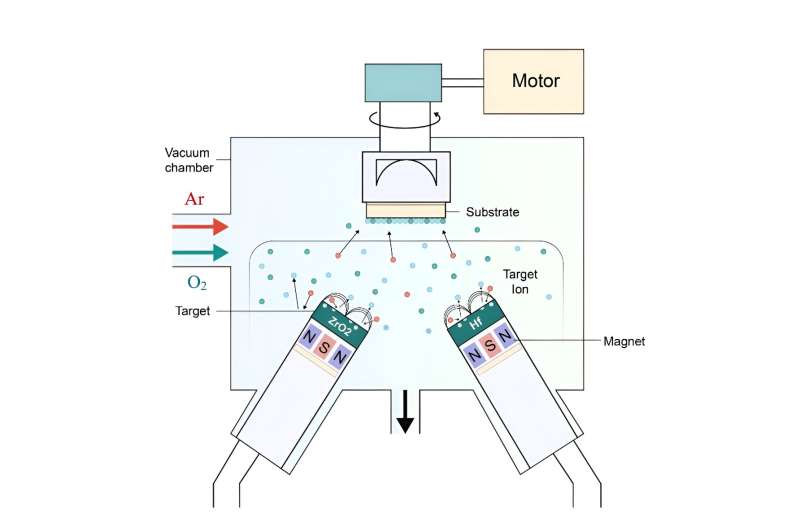This article has been reviewed according to Science X's editorial process and policies. Editors have highlighted the following attributes while ensuring the content's credibility:
fact-checked
peer-reviewed publication
trusted source
proofread
Material discovery may help realize low-cost and long-life memory chips

Hafnium oxide-based ferroelectric materials are promising candidates for next-generation nanoscale devices due to their integration into silicon electronics.
In a study published in Science, researchers from the Institute of Microelectronics of the Chinese Academy of Sciences (IMECAS) and the Institute of Physics of CAS made the discovery of a stable rhombohedral ferroelectric Hf(Zr)+xO2 which exhibits an ultra-low coercive field.
The intrinsic high coercive field of the fluorite ferroelectric Hf(Zr)O2 devices leads to the incompatible operating voltage with advanced technology nodes and limited endurance. In this work, a stable ferroelectric r-phase Hf(Zr)1+xO2 material which effectively reduces the switching barrier of ferroelectric dipoles in HfO2-based materials was discovered.
Scanning transmission electron microscopy (STEM) verified the intercalation of excess Hf(Zr) atoms within the hollow sites, forming an ordered array. Density functional theory calculations (DFT) provided insights into the underlying mechanism that the intercalated atoms stabilize the ferroelectric phase and reduce its switching barrier.
The ferroelectric devices based on the r-phase Hf(Zr)1+xO2 exhibit an ultra-low coercive field (~0.65 MV/cm), a high remnant polarization (Pr) value of 22 μC/cm2, a small saturation polarization field (1.25 MV/cm) and high endurance (1012 cycles).
The work has applications in low-cost and long-life memory chips.
More information: Yuan Wang et al, A stable rhombohedral phase in ferroelectric Hf(Zr) 1+ x O 2 capacitor with ultralow coercive field, Science (2023). DOI: 10.1126/science.adf6137
Journal information: Science
Provided by Chinese Academy of Sciences





















